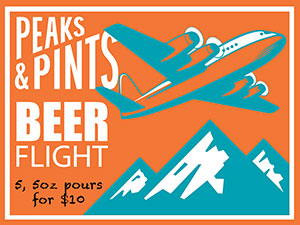 Chocolate malt is used primarily for its potent flavor and color property, which can make an impact on a beer even in small quantities. Though it can provide sugar for fermentation, that quality is less important than what they can do to the flavor and aroma of the final beer. Chocolate malt is made by gently roasting kilned malt to brown it. This creates a deep, roasty and bitter flavor that is often compared to — you guessed it — chocolate, although it has the lightest flavor and aroma profile compared with black malt and roasted barley. What it lacks in dimensionality, it more than makes up for in adaptability. Used as a counterpoint to the coffee flavor of roasted barley, chocolate malt really brings out the 70 percent dark cocoa-like character in an American stout. Used as the focal point in a smoked robust porter it brings out a lot of the darker tones missed in an everyday porter. Finally, a small amount in an English brown ale really adds depth to the dark caramel notes and a cocoa-like dryness to the finish. Used in Peaks and Pints’ Craft Beer Crosscut 10.27.17: A Flight of Chocolate Malt, it brings out the deliciousness.
Chocolate malt is used primarily for its potent flavor and color property, which can make an impact on a beer even in small quantities. Though it can provide sugar for fermentation, that quality is less important than what they can do to the flavor and aroma of the final beer. Chocolate malt is made by gently roasting kilned malt to brown it. This creates a deep, roasty and bitter flavor that is often compared to — you guessed it — chocolate, although it has the lightest flavor and aroma profile compared with black malt and roasted barley. What it lacks in dimensionality, it more than makes up for in adaptability. Used as a counterpoint to the coffee flavor of roasted barley, chocolate malt really brings out the 70 percent dark cocoa-like character in an American stout. Used as the focal point in a smoked robust porter it brings out a lot of the darker tones missed in an everyday porter. Finally, a small amount in an English brown ale really adds depth to the dark caramel notes and a cocoa-like dryness to the finish. Used in Peaks and Pints’ Craft Beer Crosscut 10.27.17: A Flight of Chocolate Malt, it brings out the deliciousness.
 Young’s Double Chocolate Stout
Young’s Double Chocolate Stout
5.2% ABV
Wells & Young’s Double Chocolate Stout’s thick, creamy head sticks to the glass, emitting cocoa powder and semi-sweet chocolate. A hint of hoppiness in the air reminds that it is very much a beer. Pale ale and Crystal malt, Chocolate malt, special blend of sugars, Fuggle and Goldings hops, real dark chocolate and chocolate essence are all utilized in creating this unique beer. Creamy chocolaty sweetness coats the tongue like liquid silk. The malty, chocolaty smoothness dives into roasted malt bitterness that tingles through the aftertaste: The chocolate’s truly the chip off the old stout.
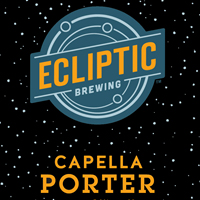 Ecliptic Capella Porter
Ecliptic Capella Porter
5.2% ABV, 39 IBU
As one of the founding brewers at Deschutes Brewery, Ecliptic Brewing Co. head brewer John Harris designed Black Butte Porter, which remains one of the best-selling porters in the country and is a model for the style. Capella is based on an entirely different recipe, Harris says, but was designed with a similar “creatively traditional” approach. Minor tweaks (Munich malt for a boost in toasty, biscuity character; de-husked Chocolate malt for reduced astringency and a softer roasted profile) give personality to a beer whose cocoa and burnt sugar flavors, bone-dry finish, and lingering notes of burnt toast remind us of a chocolate chip cookie.
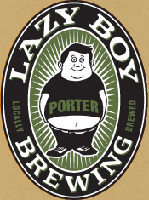 Lazy Boy Porter
Lazy Boy Porter
5.8% ABV
Lazy Boy Brewing owner and brewmaster Shawn Loring homebrewed with a group of guys in Cheyenne, Wyoming. They called themselves “The Lazy Boys.” The Lazy Boy Bitter became their flagship beer. When Loring moved to Everett, Washington, the name for his brewery was a no-brainer. The 15-barrel Lazy Boy Brewing was born in May 2006. Lazy Boy Porter is brewed with Chocolate malt, as well as Pale, Crystal and Munich malts. With the addition of Mt. Hood and Willamette hops, this porter has big roast and slight bitter up front with just a hint of some sweetness to balance it out.
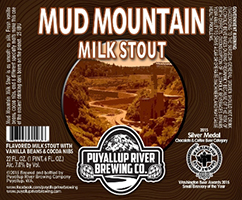 Puyallup River Mud Mountain Milk Stout
Puyallup River Mud Mountain Milk Stout
7% ABV
Puyallup River Brewing Mud Mountain Milk Stout grabbed a silver medal at the 2015 Washington Beers Awards. It grabbed a bronze at the 2016 Washington Beer Awards. It grabs every drinker when they taste its smooth as chocolate silk self. Fresh vanilla beans, cocoa nibs, oats, and six different specialty malts, including Chocolate malt, make this milk stout one of the easiest drinking dark beers on the planet.
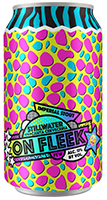 Stillwater On Fleek
Stillwater On Fleek
13% ABV, 50 IBU
Vermont brewery Casita Cerveceria traveled to Baltimore, Maryland to brew this black as night imperial stout at Stillwater Artisanal. Oh, but it doesn’t smell like motor oil but instead coffee, burnt toast, dark chocolate and a little marshmallow, all woven between strong alcohol tones. We placed this delicious treat at the end of the flight as it warms complex licorice, bold earthy bitterness, chocolate, earthy vanilla, faint smoke and caramel fudge come forth. It finishes long with an intense and heavy mouthfeel — almost like a milkshake — slightly vinous for the style, with a smooth but firm alcohol warmth. There’s enough carbonation to push the beer along and make it dangerously, DANGEROUSLY drinkable for 13 percent.
